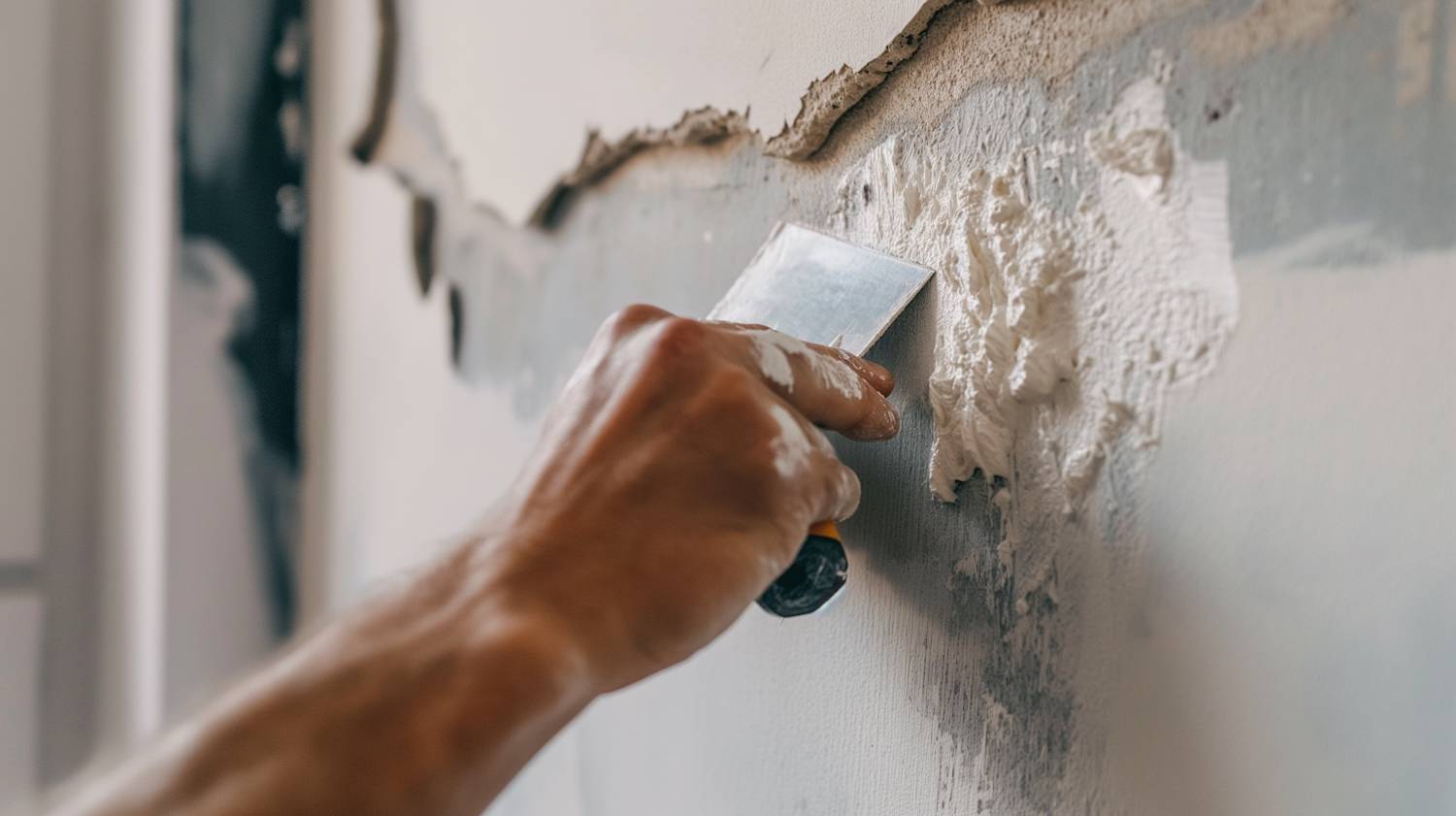Everybody knows the feeling; you've just gotten back from work or a trip and there it is- a crack in your plaster like a scar on your beautiful home. It can be a gut-wrenching sight to discover plaster damage, but don't lose hope. With the right materials, you can fix up your home yourself with little to no problem. This blog post is your step-by-step guide to understanding and implementing plaster repair, so you can reclaim control over the look of your house.
Understanding Plaster Repair
First and foremost, it's vital to understand what plaster repair is and why it's necessary. The plaster that covers your walls is quite sturdy, but over time, due to varying degrees of wear and tear, it tends to get damaged. This damage can present in different ways, from hairline cracks to substantial chunks falling off. Without immediate repair, the damage can escalate, quickly affecting the entire wall or ceiling.
Materials Needed for Plaster Repair
Before you start your plaster repair project, it is crucial to prepare and gather all necessary materials. Here are some of the things you'll need:
- Plaster
- Water
- Patching plaster
- Plaster washers and screws
- A utility knife
- A dust mask and safety glasses
- A vacuum cleaner
- A hammer and a nail set
6 Steps to DIY Plaster Repair
1. Identifying the Damage
The first step is to assess the damage. The most common types of plaster damage are hairline cracks, deep cracks, and sagging plaster. Each requires a different approach, so it's crucial to properly identify the type of damage before you can start repairs.
2. Clean Up
Next, clean up the damaged area, so it's free from debris and dust. This step is vital in ensuring the most effective plaster repair as it provides a clean surface for the new plaster.
3. Create a Firm Foundation
In this step, you'll be creating a strong base for the new plaster to latch onto. This can be done by applying a bonding agent or using plaster washers and screws.
4. Apply Patching Plaster
The next step is applying patching plaster on the firmed-up old plaster. It requires precision and patience. It may take several layers, depending on the size of the damage.
5. Sand and Smooth
Once the patching plaster has dried, it's time to sand the area. This will make the new plaster flush with the old one, creating a seamless and smooth surface.
6. Paint or Wallpaper
The final step, once the plaster patch is completely dry, is to paint or wallpaper over the repaired plaster. This will conceal the repair and leave your wall or ceiling looking brand new.
Following these steps will help you perform an effective plaster repair, saving your walls and preserving the beauty of your home. Remember, if the damage seems too extensive or is recurring frequently, it may be best to call in a professional.
Important Tips for Effective Plaster Repair
Throughout this process, there are a few key things to keep in mind to ensure successful plaster repair. First, be patient. Letting each layer of plaster dry thoroughly before applying the next will result in a stronger, more effective repair. Second, always prioritize cleanliness. By keeping the surface of the repair clean, you're setting yourself up for a better final result. Lastly, always consider safety. Wear safety goggles and a mask to protect your lungs and eyes, especially during the cleanup and sanding stages.
So whether your beloved home is showing signs of age or an unexpected accident has led to some unsightly plaster damage, repair doesn't have to be a daunting task. Plaster repair is more than just a maintenance task; it's an opportunity to restore the charm and appeal of your home. With the right tools, proper preparation, and a guide like this, anyone can tackle plaster repair and keep their home looking its best.
Frequently Asked Questions about Plaster Repairs
What are the signs that a plaster wall needs repair?
The common signs to look out for include cracks, hollow spots, peeling paint, water damage, or plaster parts falling off. If you notice any of these, it's time to consider plaster repair.
Do I need professional help for plaster repair or can I do it myself?
Though some minor plaster repair jobs can be done with a bit of DIY effort, calling in the professionals can certainly save you time and ensure a longer-lasting result. If the damage is severe or concerns a large area, professional help is highly recommended.
How long does it take for a plaster repair to dry?
The drying time greatly depends on the depth of the plaster and the environmental conditions. Typically, you can expect the plaster repair to take up to a week to dry completely.
How can I prevent further damage to my plaster walls?
Preventing further damage involves correcting the causes of the initial damage. Ensuring proper insulation, avoiding high impact or heavy loads on the walls, and fixing water leaks promptly can help extend the life of your plaster walls.
Can I paint or wallpaper directly over a freshly repaired plaster?
No, it's not advisable to paint or wallpaper over freshly repaired plaster until it's completely dry. This can cause both the paint and plaster to peel off. The plaster should be left to dry and then primed before applying paint or wallpaper.
Can plaster repair fix water damage?
Yes, plaster repair can certainly fix water damage in most instances. However, it's important to first fix the source of the water leak or moisture before carrying out the plaster repair to prevent future issues.
Is it possible to do plaster repair on ornamental or decorative plasterwork?
While it's certainly more challenging, plaster repair on decorative or ornamental plasterwork is indeed possible. It often requires the expertise and skilled hands of a professional plasterer, particularly for complex patterns and designs.
Can plaster repairs be done on ceilings?
Yes, plaster repair can be done on both walls and ceilings. However, the repairs on ceilings can be more challenging due to access issues and the need to work against gravity.
Is plaster repair messy?
It can get a bit messy, especially when removing damaged parts or sanding down rough surfaces. However, a skilled plasterer will keep the site as clean as possible through the use of drop cloths, vacuum cleaners and by properly discarding the debris.
Is plaster repair expensive?
The cost of plaster repair can vary greatly depending on the severity of the damage, the area to be repaired, and whether or not professional services are employed. However, given the fact that it helps maintain the integrity, look, and value of your property, it's surely a valuable investment.
What type of plaster is commonly used for repair?
Plaster of Paris is most commonly used for minor repair work. It's easy to work with, sets quickly, and creates a smooth surface. For larger jobs, a more durable plaster like lime plaster might be necessary.
Pros and Cons of Plaster Repair
Pros of Plaster Repair
Durability and Longevity
One of the foremost advantages of plaster repair is the durability and longevity that it offers. Unlike other construction materials:
- Plaster does not peel or crack easily. It functions well under stressful conditions.
- Once repaired, a plaster wall can last for several years, thus providing excellent value for money in the long run.
- The repaired sections blend seamlessly with the original plaster, maintaining the aesthetics of the home.
Improved Aesthetics
Another advantage of plaster repair is the visual appeal it can add to your property:
- A well-done plaster repair can make old walls look brand new again, adding a fresh and clean look to the interiors.
- It's possible to create a variety of finishes with plaster, hence you can choose a look that complements your home's existing style.
- Plaster can also be painted over, giving you the flexibility to choose any color scheme that suites your preference.
Air Quality Improvement
Plaster repair also has the benefit of improving indoor air quality:
- Unlike dry wall, plaster is naturally resistant to mold and mildew, both of which can significantly harm indoor air quality.
- A well-maintained plaster wall doesn't harbour dust, which can reduce allergies and improve the overall health of the occupants.
Cons of Plaster Repair
Cost and Time
Among the cons, the cost and time required for plaster repair stand out:
- Plaster repair can be expensive, especially if the damage is extensive.
- The process of repairing plaster can take a long time, which could lead to inconvenience for the occupants of the house.
Knowledge and Skills Requirement
Another disadvantage of plaster repair is the level of knowledge and skills it requires:
- It's not a DIY-friendly task as it needs a professional touch for a flawless finish.
- Finding a skilled contractor who works with plaster can be a challenge as many prefer to work with drywall, reducing your pool of potential helpers.
- Incorrectly done plaster repairs can lead to more harm than good. It could weaken the structure or cause the appearance of bubbles and uneven surfaces.
Need for Regular Maintenance
Lastly, plaster repairs need regular maintenance:
- To maintain their aesthetic appeal, plaster walls often need regular cleaning and dusting.
- If not maintained properly, repaired plaster could degrade much faster than new plaster.
The pros and cons of plaster repair largely depend on the specific circumstances. It is essential to evaluate individual situations and needs before making a decision about plaster repair.
Summary
When your walls need TLC, plaster repair is the way to go. It can breathe fresh life into your aged or worn-out walls, making them look as good as new. With the right tools, materials, and a bit of patience, you can successfully carry out this task. Remember, there's no need to rush the process. It's more important to get it done properly.
Despite it seeming like a daunting task at first, plaster repair allows you to maintain the look and feel of your home. The delight in seeing your walls restored to their full glory after taking the time and effort to repair the plaster is incomparable. Don't be quick to cover up those cracks or stains, but rather upgrade them to contribute to the charm of your space.
A job well done in plaster repair not only improves the aesthetic appeal of your house but it also helps in increasing its value. Who knew that something as simple as fixing cracks and holes would make such a difference! And the best part is you don't have to be an expert to complete this task. With a bit of learning and practice, you'll be patching up your walls like a pro in no time.
About Atlas Stucco
Welcome to Atlas Stucco, Sacramento's premier stucco service provider. Based in the heart of California, we're proud to offer exceptional quality workmanship in all our projects. With our dedicated team of professional craftsmen, we've been providing our services with passion and expertise for many years. From residential to commercial projects, we strive to offer the highest standards of work, ensuring our clients are always satisfied with the finished results. Whether you need a simple repair or a complete house stucco makeover, look no further than Atlas Stucco!
Tags: plaster repair, home improvement, DIY,








